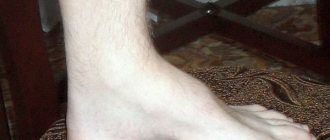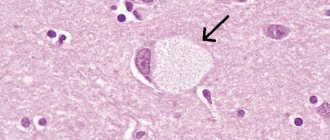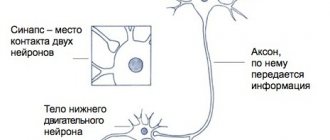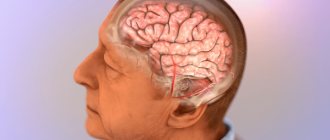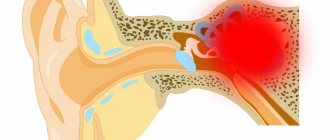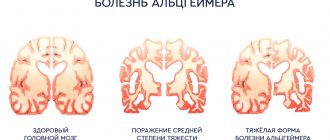The danger of borreliosis during pregnancy
The effect of spirochetes on the course of pregnancy and fetal development has not been sufficiently studied, but due to their similarity with Treponema pallidum (the causative agent of syphilis), their teratogenic effect is assumed.
WARNING! The information on the site is provided for informational purposes and cannot be used to make a diagnosis or make treatment decisions.
There is still no reliable data on how borreliosis affects the fetus during pregnancy.
The negative impact on the baby and the course of the gestational period has not been proven.
There is no consensus on whether borreliosis is transmitted through breast milk.
Domestic and German infectious disease specialists believe that Borrelia does not pass into breast milk, and you can breastfeed your baby after treatment with antibacterial drugs. In addition, breast milk contains enough antibodies to protect the baby from the virus.
English borreliosis researchers are confident that there is a risk of infection during breastfeeding, since borrelia penetrate into mother's milk. However, this theory has not been proven.
Symptoms
Lyme disease has a long incubation period—up to three weeks.
After a tick is detected, swelling, redness and hardening of the soft tissues are observed at the site of the bite, itching is felt, and a local increase in temperature is possible.
These symptoms pass, after some time the victim periodically begins to suffer from a sore throat, sore throat, aching bones, and chills. In the evenings the temperature rises to subfebrile levels.
The symptoms go away as inexplicably as they begin.
After the incubation period, migrating ring-shaped spots appear on the body - purplish-blue circles with a white core.
Pain and aches in the muscles and bones intensify, the muscles of the back of the head are tense, the lymph nodes enlarge and become denser.
Depending on which systems are affected by the spirochetes, symptoms of damage to the central nervous system, eyes, and gastrointestinal tract appear.
Symptoms of intoxication increase - the headache intensifies, nausea and vomiting, and severe dizziness appear.
As the disease progresses, the patient's speech is impaired, the clarity of movements is impaired, her gait becomes uncertain, her memory becomes weaker, and mental disorders are possible.
Photophobia appears, sensitivity to volume and smells, as well as taste buds change. Meningitis develops.
Cardiac activity is disrupted - the heart hurts, the heart rhythm changes.
The disease progresses in waves, with periods of exacerbations followed by remissions.
Borreliosis becomes chronic. Its symptoms depend on which organ or system of the body is most affected.
Symptoms of tick-borne borreliosis in humans
Infection occurs when infectious agents (borrelia) enter the body, most often through a tick bite with insect saliva.
From this moment the incubation period begins: pathogenic microorganisms “take hold”, multiply, the disease develops, but there are no tangible signs yet. The duration of this period varies - from 2 to 30 days.
The incubation period for borreliosis is on average 7-14 days.
In especially severe cases, with weakened immunity, the first signs of the disease may appear a couple of days after the bite.
Sometimes the body copes with the infection on its own for a long time, and symptoms do not appear for a whole month. The first signs that appear indicate that the body has not healed itself.
There are 3 stages of development of borreliosis:
Advertising:
- Stage 1
- getting under the skin, the disease affects the lymph nodes. Duration of the stage - up to 1 month; - Stage 2
- the infectious process spreads through the blood and lymph, affecting internal organs and joints. This stage can last up to six months; - Stage 3
- borreliosis remains in the body for a long time, disrupting the functioning of the musculoskeletal system or nervous system. Often the third stage is characterized as the transition of the disease to a chronic form.
An important factor is at what stage borreliosis was diagnosed: symptoms and consequences will vary from person to person, as will the effectiveness of treatment.
Leg cramps - unpleasant sensations, “twisting” muscles - can occur for various reasons. To get rid of them, you need to take special medications. Read more in the article: “anticonvulsants for the legs.”
The division between stages is formal; there is no clear sense of transition to the next one. Timely detection of pathology (at stages 1-2) and proper therapeutic measures ensure complete cure.
Characteristic signs of stage 1 of the disease
The first stage of borreliosis is complicated by the fact that it can be asymptomatic. Manifestations of infection in adults and children are similar - as with encephalitis, they resemble ARVI or influenza. Skin changes in the bite area help distinguish borreliosis.
In 7% of all cases, stage 1 passes without symptoms.
In the area where the tick was previously discovered, erythema forms: the bite site turns red, swells, and a darker spot forms in the center.
Initially, the diameter is 1 cm; over time, the oval of edema expands (up to 20 cm). The edges are clear, the patient feels itching at the site of the bite.
Advertising:
The first symptoms of borreliosis include:
- aching bones, chills, fever, migraine attacks, general weakness;
- rhinitis, conjunctivitis, sore throat, cough;
- enlargement of lymph nodes throughout the body, primarily those located closer to the bite site;
- There are cases where already at this stage the patient developed hepatitis, signs of brain damage were discovered - fear of light, nausea, headaches that came in waves.
In addition to erythema, urticaria or other rashes may appear on different parts of the body. Typically this stage lasts about 30 days, but there are known cases of infection spreading throughout the body even within a few days. In the absence of antibiotic therapy, the disease moves to the next stage of development.
Orchitis is an infectious disease in which one or both testicles become inflamed. Pathology rarely develops independently, more often as a complication of the main inflammatory process in the body. Read more in the article: “symptoms and treatment of orchitis in men.”
The second stage of borreliosis: signs, features
At this stage, the infection spreads throughout the body, affecting other organs. The bite site changes color to bright crimson and degenerates into a benign formation - lymphocytoma.
The symptoms of the previous stage disappear, they are replaced by others, more characteristic - they are associated with the area affected by the infection. Most often, pathologies are found in the functioning of the heart or nervous system.
Advertising:
The most common manifestations of stage 2 borreliosis:
- throbbing headache, attacks of dizziness;
- disruptions in the functioning of the optic nerve, possible paralysis of the facial muscles, meningitis (more often develops in children), the patient experiences heaviness in the back of the head;
- piercing pain in different parts of the body, most often in the chest;
- radiculitis, decreased sensitivity of nerve endings to pain;
- dyspnea;
- concentration is impaired, sleep problems are possible.
Depending on the area of damage, other, nonspecific symptoms may appear: liver enlargement, blood during urination, inflammation of the tonsils and bronchi, eye diseases, joint pain, increased fatigue even with minimal exertion. With serious damage to the heart, the patient develops heart failure. It is not uncommon for a rash to form throughout the body.
How does stage 3 work?
Upon completion of two stages, borreliosis becomes chronic, affecting a specific organ or system. This usually happens a couple of months after infection. There are cases where the third stage of the disease began only after 2 years. Chronic borreliosis occurs in waves with relapses and is characterized by a gradual deterioration of the condition.
Frequent medical manifestations of stage 3 borreliosis:
Advertising:
- Chronic arthritis
. Large and small joints are affected. Over time, the inflammatory process spreads to bone tissue (osteoporosis) and nearby muscles (myositis). - Skin lesions (acrodermatitis)
. Bluish spots, swelling, and the skin become denser appear on the elbows, under the knees, on the feet and the back of the hands. Subsequently, in the absence of treatment, the affected areas of the skin atrophy. - Pathologies of the nervous system
. The patient may experience: encephalomyelitis, epileptic seizures, complete or partial paralysis, decreased or increased sensitivity of nerve endings in different parts of the body, deterioration of memory and intellectual abilities, problems with hearing and vision.
First, the infection “selects” one organ system, causing pathological conditions in it. Typically, chronic borreliosis affects the nervous system, skin or joints. Over time, the impact of the disease can become combined, that is, several organs or systems will be affected. Patients are often weakened and depressed.
Diagnostics
If symptoms of borreliosis are pronounced, the presence of antibodies in the blood is checked. The serological method is used because cultures are not sensitive enough.
In patients with immunodeficiency and with severe symptoms and a negative test, diagnosis is carried out using the PCR method.
The blood is checked for the presence of IgG and IgM antibodies. IgM is formed in the blood during the first week of infection; after a month or two, its concentration decreases. IgG can appear within six months from the moment of infection.
To control the situation, the blood is checked for both groups of antibodies, every two to four weeks.
Course of therapy
A pregnant woman is prescribed antibacterial therapy in a gentle dosage. It is important to start treatment as early as possible, before the virus has thoroughly penetrated the circulatory system and internal organs.
The earlier treatment is started, the easier and faster the recovery. If therapy is started in the first month after infection, the disease is cured, in most cases, completely without becoming chronic.
To treat borreliosis, antibiotics from the group of tetracyclines, penicillins and cephalosporins are prescribed.
In the absence of neurological symptoms, the presence of erythema migrans and enlarged lymph nodes, medications in tablets or capsules are prescribed:
- Doxycycline - 100 mg 2 times a day;
- Amoxicillin - 1000 mg 3 times a day;
- Minocycline - 100 mg 2 times a day;
- Cefuroxime - 500 mg 2 times a day.
The course of treatment is 2-3 weeks (14-21 days).
In the acute course of the disease with signs of damage to the nervous and cardiovascular systems and joints, the following is prescribed:
- Doxycycline - 200 mg 2 times a day;
- Minocycline - 200 mg 2 times a day;
- Cefotaxime - 2000 mg 3 times a day intravenously;
- Ceftriaxone - 2000 mg 1 time / day IV or IM.
Duration of therapy is 21-28 days.
In the chronic form of Lyme disease with signs of damage to the joints, heart, nervous system and skin, the following are indicated:
- Ceftriaxone 2000 mg intravenously once a day for 21 days;
- Penicillin 4 million units intravenously 6 times a day for 14 or 21 days.
Local therapy is carried out at the site of the bite. For this, a special mash (mixstura agitanda) is prepared.
Compound:
- metronidazole - 5.0 g;
- sulfanilamide sulfacetamide 30% aqueous solution - 40 ml;
- dexpanthenol 75% 10 ml;
- prednisolone - 0.50 g;
- distilled water - 50 ml.
Before use, shake the liquid and make lotions in the form of applications for 10-15 minutes three times a day for a course of 5-7 days.
Treatment of borreliosis during pregnancy does not have a single scheme. The doctor takes into account the timing of pregnancy, the severity and form of the disease, the concentration of Borrelia in the body, and prescribes individual therapy.
Drugs are prescribed based on an objective assessment of the severity of the condition.
Most cases of borreliosis during pregnancy result in the birth of a healthy baby.
Classification
There are several options for the classification and description of tick-borne borreliosis, but depending on the manifestation of symptoms, Lyme disease is divided into 3 stages.
- Stage 1 (or latent form).
Mild form, which can be erythematous or non-erythematous. It is characterized by an almost complete absence of signs and, in some cases, the growth of slight erythema at the site of the vector bite. Usually the 1st stage and the incubation period (no more than 30 days) coincide. Consequences: development of an acute form.
- Stage 2 (moderate form with a subacute course, it is necessary to treat very quickly, since the consequences can lead to damage to the heart muscle in humans).
Signs of stage 2: erythema spreads throughout the body. Consequences: a person develops a high temperature and fever.
- Stage 3 (chronic, severe form with acute course).
Chronic Lyme disease means that the pathogen, namely the Borrelia bacteria, was not killed during previous treatment.




